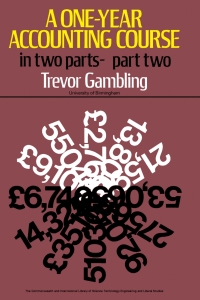End of Chapter: Relevant Costs for Short-Term Decisions A8-70. Starbucks food waste: Sell now or process further? (Learning Objectives 1 & 6) [REAL LIFE] With nearly 18,000 stores in 60 countries, Starbucks serves a lot of coffee and pastries each day, and it also generates a lot of waste, including day-old pastries and coffee grounds. Starbucks continually wrestles with how to best handle this food waste. A researcher in Hong Kong is developing a fungus that converts Starbucks food waste into useful chemicals through a process called biorefining. Basically, the Starbucks food and coffee waste products are blended with a special type of fungus that breaks the food's complex carbohydrates down into simple sugars. These sugars then go into a fermenter, where they are exposed to bacteria that break the sugar down into succinic acid. Succinic acid is a colorless, odorless substance that is frequently used in the production of medicines, foods, bioplastics, and laundry detergents. Assuming that the biorefining process turns out to be technologically feasible, Starbucks will have another option for its food waste products. Let's assume that Starbucks has the following options for handling its food and coffee waste: Day-old pastries disposal options Day-old pastries disposal options a. Discard in trash. b. Donate the day-old pastries to local homeless shelters and other charitable organizations. c. Sell the day-old pastries in its retail stores for 50% off. d. Process the day-old pastries into succinic acid and sell the succinic acid to manufacturers or labs. Coffee grounds disposal options a. Discard in trash. b. Give coffee grounds to customers through a program called Grounds for Your Garden. Plants such as roses, azaleas, and evergreens can be fertilized with coffee grounds. c. Sell coffee grounds to commercial composters. d. Process the food waste into succinic acid and sell the succinic acid to manufacturers or labs. Starbucks has a goal of zero waste at its retail stores, so it is continually assessing its waste-disposal options. Coupled with its zero-waste goal, though, is its profit motive. Starbucks is a for- profit corporation and must balance its sustainability initiatives a W. vital cost euucuns Louu la DULAS Teanze 110111 uus puont: c. What costs would Starbucks incur for this option? d. What qualitative factors would Starbucks need to consider before choosing this option? e. What are the advantages associated with this option? What are the disadvantages associated with this option? 2. For each of the disposal options for coffee grounds, answer the following questions: a. What revenue (if any) would be generated by this option? b. What cost reductions could Starbucks realize from this option? c. What costs would Starbucks incur for this option? d. What qualitative factors would Starbucks need to consider before choosing this option? e. What are the advantages associated with this option? What are the disadvantages associated with this option? 3. For both day-old pastries and coffee grounds, are there any options that are particularly attractive in your viewpoint? Are there any options that would not be acceptable in your viewpoint? Justify your response Day-old pastries disposal options a. Discard in trash. b. Donate the day-old pastries to local homeless shelters and other charitable organizations. c. Sell the day-old pastries in its retail stores for 50% off. d. Process the day-old pastries into succinic acid and sell the succinic acid to manufacturers or labs. Coffee grounds disposal options a. Discard in trash. b. Give coffee grounds to customers through a program called Grounds for Your Garden Plants such as roses, azaleas, and evergreens can be fertilized with coffee grounds. c. Sell coffee grounds to commercial composters. d. Process the food waste into succinic acid and sell the succinic acid to manufacturers or labs. Starbucks has a goal of zero waste at its retail stores, so it is continually assessing its waste-disposal options. Coupled with its zero-waste goal, though, is its profit motive. Starbucks is a for- profit corporation and must balance its sustainability initiatives a










